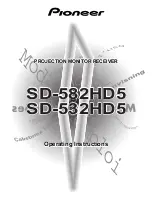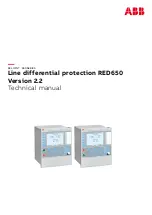
1
Quadbar Flexi
TM
501 and 501QR Hand Book
3/19
QB Industries 7 Margaret Street CLIFTON, QLD Aus61746123100 www.quadbar.com
The
‘
QUADBAR FLEXI
’
TM
–
Crush / Operator Protection Device (CPD) (OPD)
SAFETY
Use the Quadbar Flexi
TM
in conjunction with other safety measures. Consider using an alternative vehicle suited to
the particular task; train riders in the use of the quad with the Quadbar fitted and use of Personal Protection
Equipment (PPE) required for safe operation.
Undertake a risk assessment of the implications of fitting a Quadbar and take appropriate steps to avoid any threat to
injury. Asses any risks associated with or limitations the Quadbar may place on use of the quad or any accessories and
take steps to ensure safe operation. Always be aware of the height of the Quadbar to avoid obstacles (as you would
with the width of the quad) the flexible joint is only designed for inadvertent contact with an obstacle. Never use the
Quadbar to support a load, including persons or loads on the carry rack and any other loads
. Don’t use the Quadbar
as a tow or pull point. For your safety, QB Industries
recommends that you don’t tow a trailer or other loa
d with a
quad that is fitted with a Quadbar. Safety organisations and some government regulators prohibit or advise not to tow
anything with a quad, regardless of whether or not a Quadbar is fitted. They suggest a better suited vehicle for towing
be used.
Maintain in sound condition the Quadbar, mounts and mounting points. Replace or refurbish the
complete “f
lexi joint
”
after heavy contact with an overhead obstacle. Replace or refurbish complete structure after a vehicle rollover.
Upon fitment of a Quadbar, DO NOT:
•
use the Quadbar to support a load, including persons, loads on the carry rack and any loads attached to the
quad, including any accessories, tools, or other aids.
•
make any modifications to the Quadbar without the express permission and sanction (in writing) from QB
Industries
Pty Ltd Don’t
modify, repair, drill holes or weld
•
Use the quad in a manner that would increase the risk of roll over
•
Use the Quadbar for any other purpose
•
Use the Quadbar with any operator restraints or seatbelt of any kind
•
In the event of a rollover or other damage, always replace the Quadbar and damaged quad parts, or arrange
an inspection by a qualified person to certify there is no structural damage.
Specifications and ratings
•
Maximum dry vehicle weight 400kg
•
50mm Aluminium tube
•
Horizontal variance between tow bar & rack 150
–
260 mm
•
Overall height 1400 mm
•
Approximate height above seat level 800 mm
•
Weight 9.5 kg
•
Padding 25mm Polyurethane.
•
Fittings laser cut for accuracy and consistency, Fittings zinc plated
Maintenance
1.
Update safety and maintenance advice via Quadbar.com (Quadbar Manual)
2.
Keep Quadbar clean and free of abrasive material
3.
Lubrication
–
may be applied if required to bushes provided the lubricant materials does not attract and retain
abrasive material such as sand
4.
Weekly
–
visual inspection for damage, wear, structure corrosion, cracks and any sign of potential structure
failure. Any defective part must be replaced immediately. Ensure warning labels are clean, replace if
destroyed, missing, painted over or unreadable
5.
6 months
–
Inspect parts wear. Movement is allowed however replace any part of the component that exceeds
the following tolerances:
•
Bolt (#19) and bushes (#6) 1 mm of wear or clearance.
•
Tube (#3) minimum diameter 49.7mm and Bush (#9) inside diameter no greater than 53mm
Operation-
As per the quad owner’s manual and as set out in “
safety
”
section above
Decommissioning
The major components of the Quadbar constitute steel and aluminium which are easily
separated and readily recyclable.
Not to be disposed of via landfill.






















